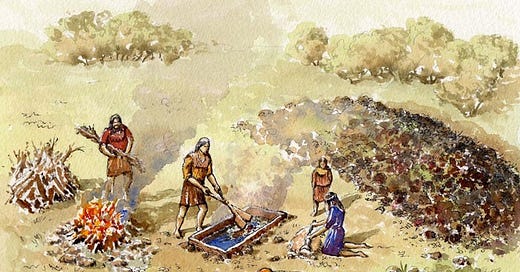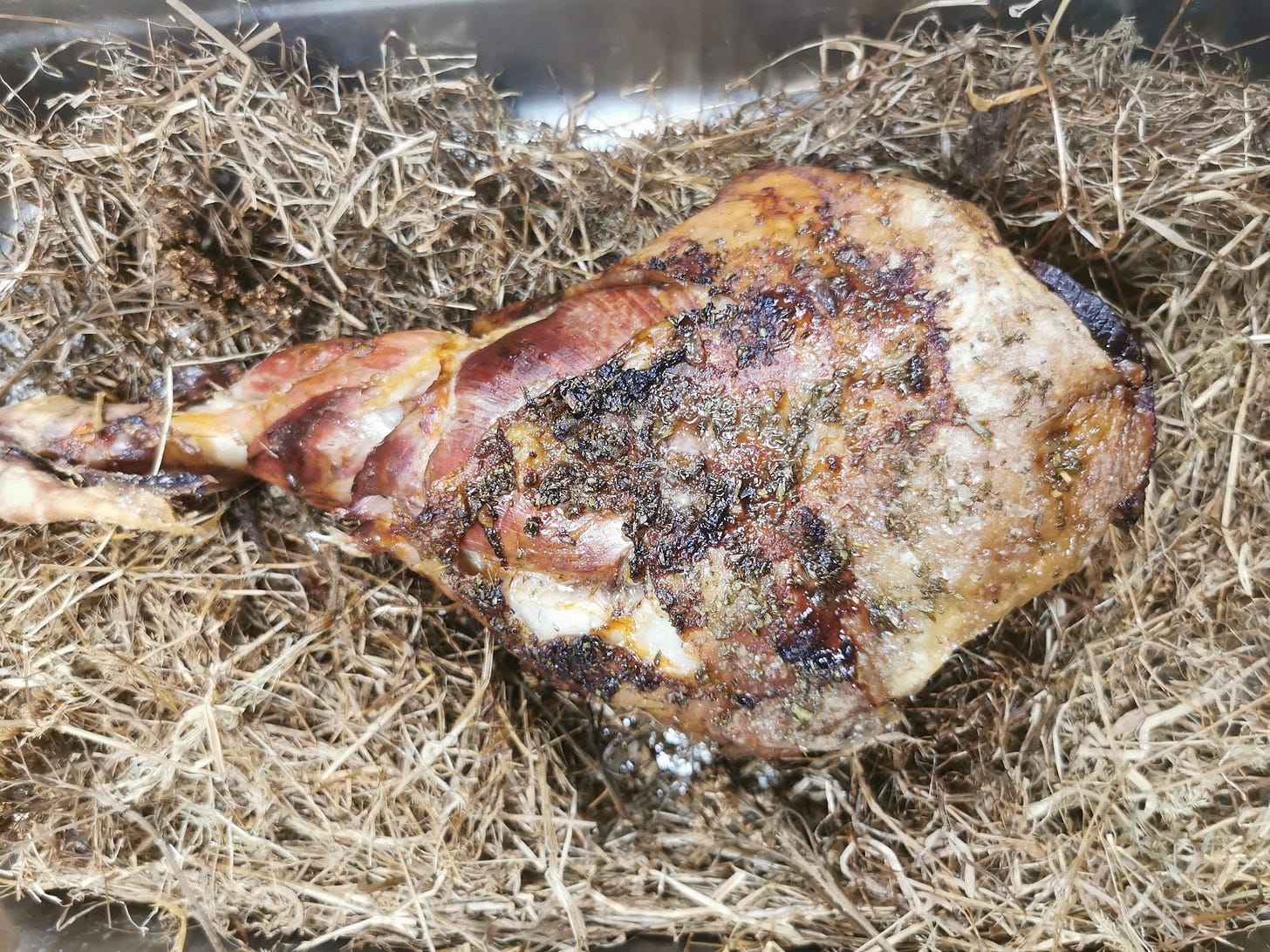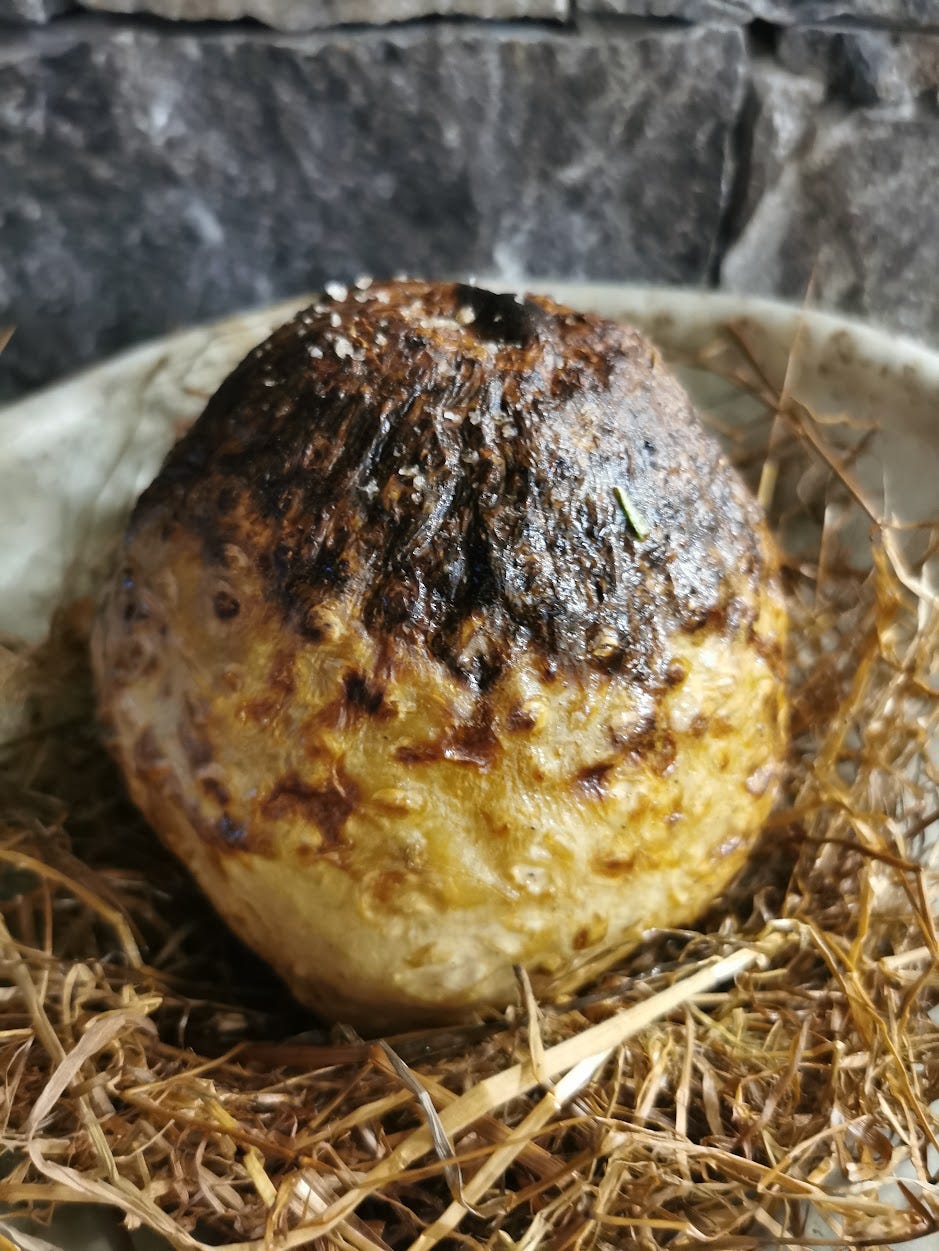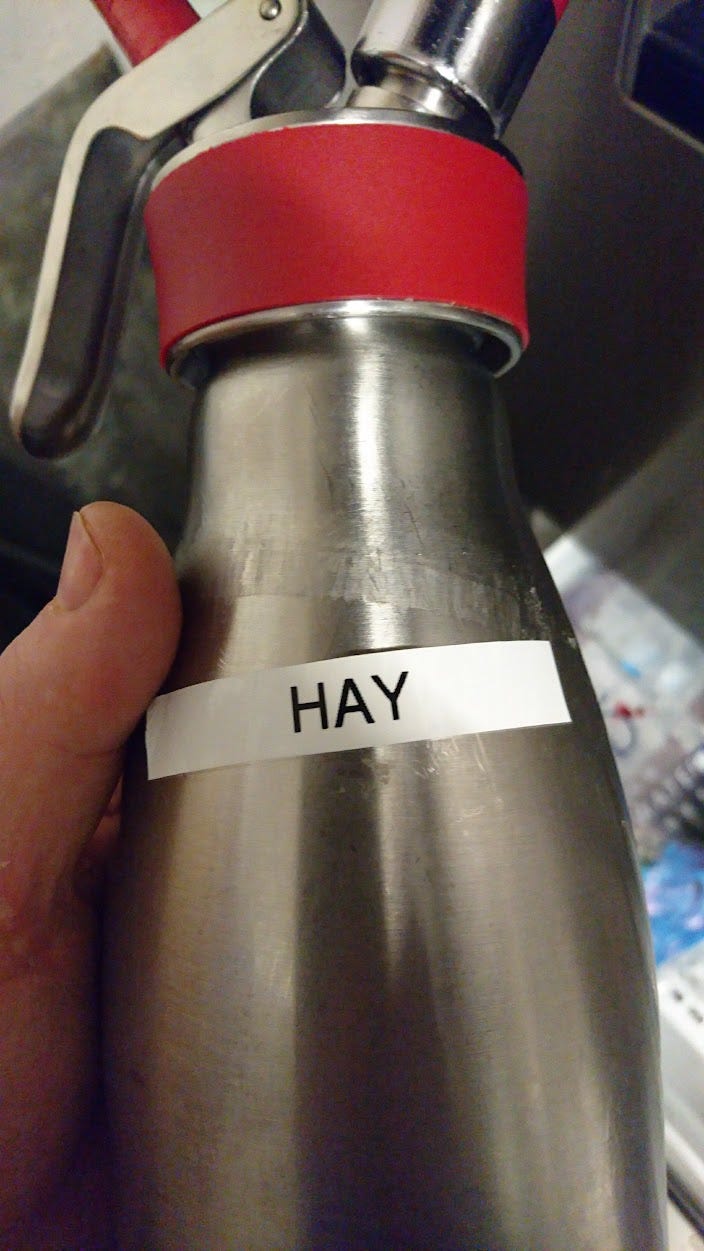Despite its association with the vanguard of contemporary haute cuisine (Rene Redzepi of Noma and Grant Achatz of Alinea in Chicago), cooking with hay is a truly ancient process, especially in Ireland. Wrapping a whole lamb in hay before cooking it was both a practical and flavoursome approach to those preparing a fulacht fiadh. For those not au fait with this Neolithic Irish practice, it consisted of heating rocks on a fire and dropping them into a trough of water in the ground. Think of is as like slow braising a whole animal in a large pot in the ground in the middle of a field with your friends.
In Irish, ‘fulacht’ suggests a cooking pit. In Irish, the word fulacht is used to denote a barbecue. ‘Fiadh’ in Irish means something like ‘wild’, relating to animals, notably deer. Perhaps, it was first used to cook the many deer that had made their way back to Ireland in the Neolithic period. It must be remembered that when the first people arrived in Ireland, all the deer, including reindeer had been wiped out by the wintry weather.
However, food historians and archaeologists are not in agreement regarding the meaning of the words, or even the use of the fulacht fiadh. It may have been used for washing oneself as well as well as making beer. Perhaps it was used for all three: who wouldn't want a taste of braised deer and a whiff of armpit in their barley beer.
Anyways, back to cooking with hay. Fast forward a few thousand years to the Norman's who took to cooking their hams in pots of filled with water and hay. (However, it must be said that the practice of cooking in the style of fulacht fiadh continued, especially by the native Irish, up until at least the Elizabeth era. That's the problem with Irish food history, there are no neat divisions to speak of as the space of all on the island over times mingles constantly together: hunter gatherer, first farmer, Celt, Viking, and Norman, to name but a few. Irish food is always multipe.
The tannic quality of hay not only added an earthy flavour to the cooking of the Normans, it also may have helped preserve the ham for longer. Ancient farmers stored their vegetables in hay boxes; that way they could have fresh vegetables months after they were picked. Kept in a cool, dark, and dry space, the hay would keep them from rotting. It's a practice that we continue to implement in the restaurant, especially with our game birds, such as pheasant, duck and pigeon.
In terms of cooking with hay, I think it was scallop roes that we first paired with this humble dry grass. The roes were removed from the scallops, gently salted, and then hot smoked in with the smouldering hay. I recall still that the resulting flavour was slightly mesmerising: the richness of the roes merged with the burnt earthy flavours of the hay. With these roes with made an emulsion (or mayonnaise) and then used it on our snack of deep-fried puffed pork crackling. Dressed with a few dill fronds, it made an impressive mouthful that would often open your meal at Aniar.
From this point on we would use our smoked scallop emulsion on many dishes, from our own sous vide poached salmon to the squid ink and seaweed crackers on our present menu.
Yet, scallops were not the only thing that ended up suffused with hay. In our cooking classes, we took to highlighting the technology of hay cooking by baking a lovely leg of Connemara Mountain lamb in a bed of hay.
Leg of lamb baked in hay
The process was simple: line an oven dish with hay and then nestle the seasoned lamb into it (for seasoning we used cold pressed rapeseed oil and sea salt). The result was a deep earthy flavour that evoked the landscape of the lamb.
Perhaps my favourite vegetable to cook in hay in Aniar is the humble celeriac. I've made it so much now it feels as if it's essence it bound into the DNA of the restaurant.
Celeriac baked in hay
A celeriac baked in hay is a sublime sight indeed, so representative of new Irish cuisine and ancient Irish cooking. Creativity and imaginative events coming together to engender new avenues of adventure for Irish food.
Celeriac baked in hay with wild mushrooms
Ingredients
1 celeriac
A handful of hay
150g wild mushrooms
10g ramsons (salted and preserved garlic seed heads)
A few sprigs of fresh thyme
Cold pressed rapeseed oil
Highbank Apple balsamic vinegar, to taste
50g butter
Sea salt
Method
For the celeriac: Wrap the celeriac in hay and bake for 1.5 hours or un. Remove from the oven and allow to cool slightly. Peel the celeriac and place the peels and then hay in a pot. Cover with water and simmer for an hour and then strain. This will be the broth. If you need it to be more intense in flavour you can reduce and then season to taste with apple balsamic vinegar and sea salt.
Fry the mushroom briefly in some oil with some thyme. Baste with the butter. Season to taste and strain of excess fat.
To serve: carve the celeriac into nice wedges. Place a wedge of celeriac in the centre of a bowl. Arrange a few mushrooms around the celeriac. Garish with some ramsons and finish with the celeriac and hay broth.
Hay Ice-cream
Hay ice-cream is another great one to take the flavour of the fields into the arena of pastry. Indeed, making the ice-cream and placing it in a siphon gun makes a wonderful impromptu hay mousse. This can be paired with roasted hazelnuts and Highbank apple syrup for a quick Irish pre-dessert.
I hope you've enjoyed learning a little about how we use hay and its historical associations with Ireland. I’d love to know if any of you use hay in cooking.
I also hope you’re enjoying my new Substack.
As I said, I’ll make every second post free to subscribers.
Best, Jp.







